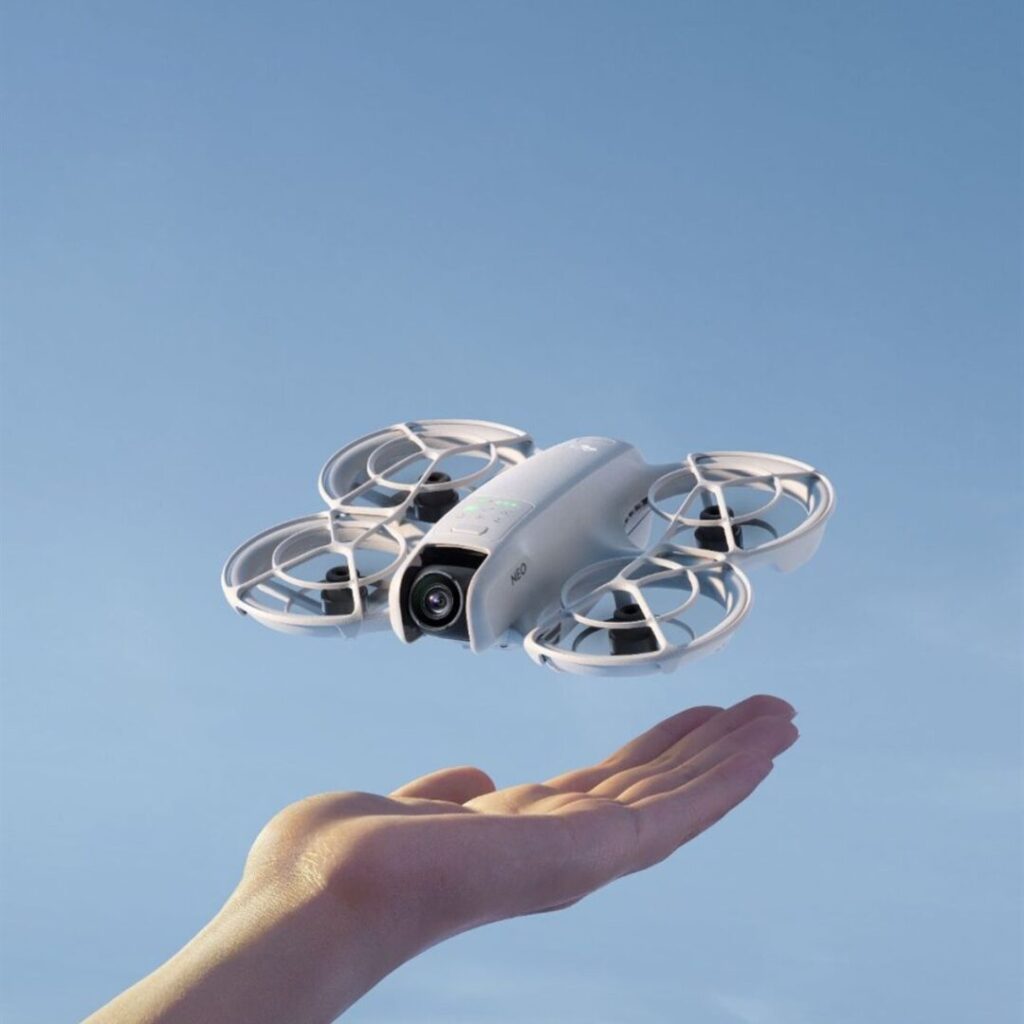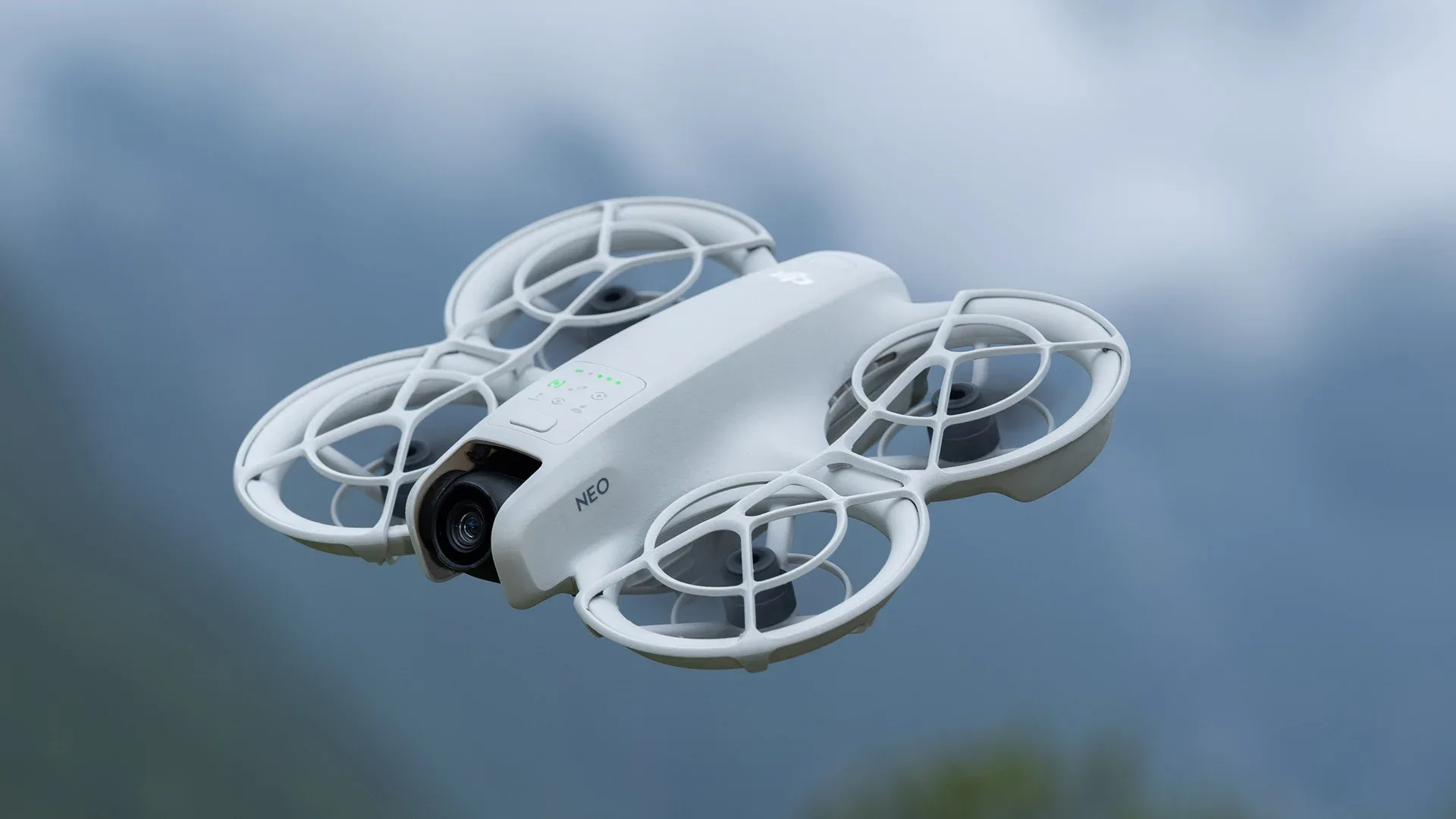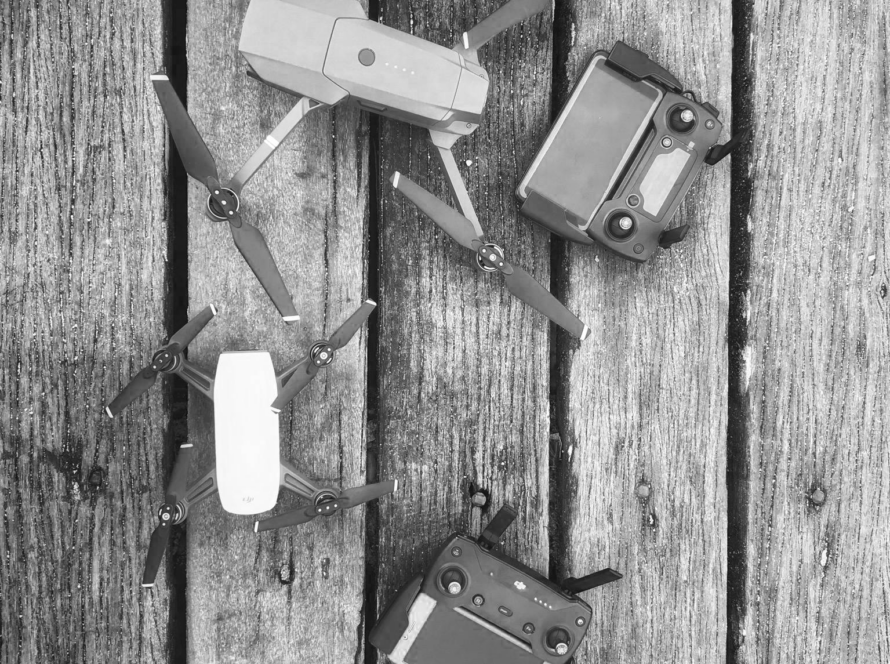
Introduction
The DJI Neo is designed as a palm-sized, lightweight drone weighing just 135 grams, making it extremely portable and easy to use. It is marketed as a “mini selfie drone” with FPV (First Person View) capabilities, aimed at vloggers and everyday users.

Key Features:
- Affordability: Priced at just £169, the Neo is positioned as an entry-level drone, offering excellent value for money with its 4K video capabilities and 12MP still camera.
- Portability: Its small size and light weight mean it can be launched and landed from the palm of your hand, and it does not require a license to operate in many regions.
- Camera and Video: The Neo features a 1-axis gimbal and can capture 4K video at 30fps, as well as 1080p video at 60fps. However, it lacks advanced camera settings like D-Log or raw shooting, which might affect image quality in poor lighting conditions.
- Flight Modes: It includes automated flight modes like Boomerang, Helix, and Circle, which make it easy to capture creative shots without extensive drone piloting experience.
- Control Options: The Neo can be controlled using a smartphone app, or paired with DJI’s FPV goggles and controllers for a more immersive experience.
Comparison with DJI Avata 2
The DJI Avata 2 is a more advanced FPV drone designed for enthusiasts and professionals. It offers enhanced features and performance compared to the Neo.
Key Differences:
- Target Audience: While the Neo is aimed at beginners and casual users, the Avata 2 is targeted at FPV enthusiasts and professionals seeking high-performance flying.
- Price and Features: The Avata 2 is priced significantly higher at £429 ( Drone only), reflecting its advanced features, including a larger 1/1.7-inch CMOS sensor for better image quality, especially in low-light conditions.
- Flight and Range: The Avata 2 offers a longer maximum flight distance of 11.6 km compared to the Neo’s 7 km, making it more suitable for extended missions.
- Camera and Stabilization: The Avata 2 provides better camera capabilities and stabilization, which are crucial for professional-grade videography.
Conclusion
The DJI Neo stands out as an affordable and user-friendly option for those new to drones or looking for a simple way to capture aerial footage. Its compact size and ease of use make it ideal for casual photography and vlogging. In contrast, the DJI Avata 2 offers more advanced features and capabilities, catering to users who require higher performance and image quality. Ultimately, the choice between these two drones depends on the user’s needs and budget, with the Neo serving as a great entry point into the world of drones



